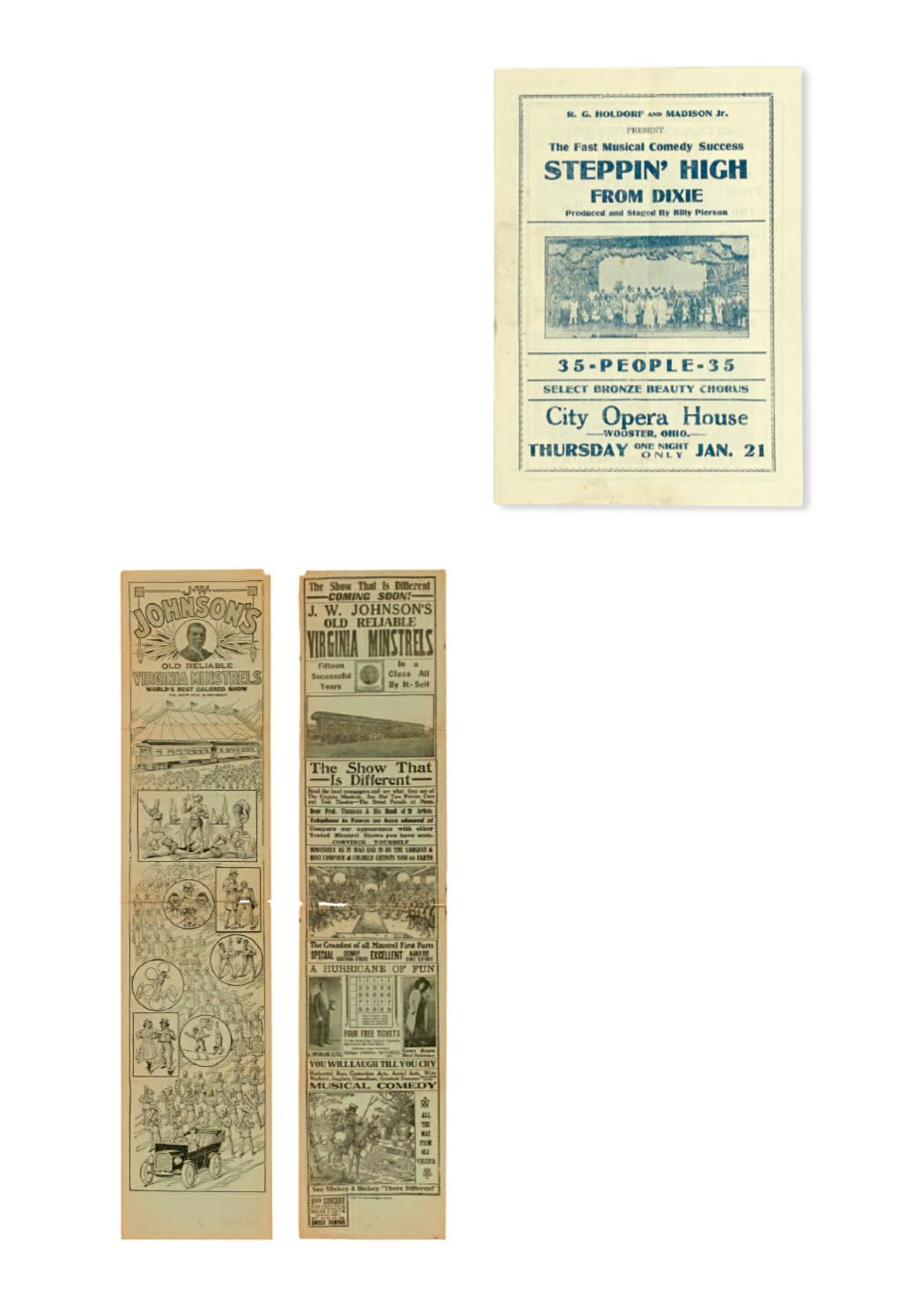

409
●
(MUSIC—MINSTRELSY.)
Coming Soon! J. W. Johnson’s Old
Reliable Virginia Minstrels.
Extra long
double-sided theatre broadside, 43 x 9
1
/
2
inches; elaborately printed with engraved
scenes on each side; using a variety of
fonts;
NEATLY PARTED IN THE CENTER
(
APPROXIMATELY
21
INCHES FROM THE
BOTTOM
)
WHERE PREVIOUSLY FOLDED
;
paper showing some light toning.
Erie, PA, circa 1920
[600/900]
A remarkable survival, this nearly four foot long
poster was printed on very thin, post-war pulp
paper. The original Virginia Minstrels was the
first blackface troupe to play in New York
(1843), and was then headlined by Dan
Emmet the man that made Jump Jim Crow
and Dixie famous. The Minstrels continued
with different personnel and management into
the 20th century. This poster states that they
had been in business for 15 years, which sug-
gests they might have simply adopted the name.
409
410
410
●
(MUSIC.) MEYERS, HAZEL &
BILLY PIERSON.
Steppin’ High from
Dixie . . . 35 People, Select Bronze
Beauty Chorus. City Opera House.
Small folio leaf, folded to form four pages,
printed on all sides with a small vignette
of the company on stage.
Wooster, OH, [1926]
[600/800]
Program for an early and important all-black
musical comedy, starring blues singer Hazel
Meyers and produced and staged by Billy
Pierson. With a review including the “famous
Steppin.” High Quartette “of four harmony
singers from the Golden Gate,” the 3 Black
Aces, and a “Bronze Beauty Chorus . . . of
dainty dimpled darlings, and dancing beauties.”
Hazel Meyers was a true superstar, having made
some 40 records of blues songs between 1923
and 1926, working with Fletcher Henderson,
whose orchestra was featured at the Harlem
opening of “Steppin’ High.” The 30 musical
numbers in the show were reportedly written by
Los Angeles brothers John and Benjamin
Spikes. “Steppin’ High” opened in Los Angeles
for two weeks at the Philharmonic Auditorium
in September 1924; followed by a San Francisco
run and then a national tour that took the com-
pany—cut in half from the original cast of
60—through a dozen states for over a year. This
Ohio performance, which added the title words
“From Dixie,” perhaps for appeal to a Midwest
white audience, was one of the very last.
RARE
:
NO COPIES ARE LOCATED BY OCLC
.









